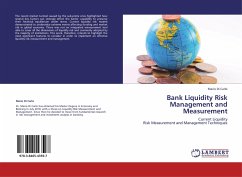This monograph focuses on the liquidity risk of commercial banks in the Visegrad countries in the period from 2000 to 2011. This risk is comprehensively evaluated with several different methods: six liquidity ratios, panel data regression analysis with fixed effects, probit model and scenario analysis. The liquidity position, net position on the interbank market and strategy of liquidity risk management differ significantly in individual Visegrad countries. The capital adequacy is the most important determinant of bank liquidity. However, some other factors such as size of the bank, credit portfolio quality or macroeconomic development are significant as well. All three tested stress scenarios would have a negative influence on bank liquidity. A run on the bank would have most serious impact on the bank liquidity in all Visegrad countries. The use of committed loans is the second most severe scenario for Czech and Slovak banks and a crisis confidence in the interbank market for Hungarian and Polish banks.
Bitte wählen Sie Ihr Anliegen aus.
Rechnungen
Retourenschein anfordern
Bestellstatus
Storno








